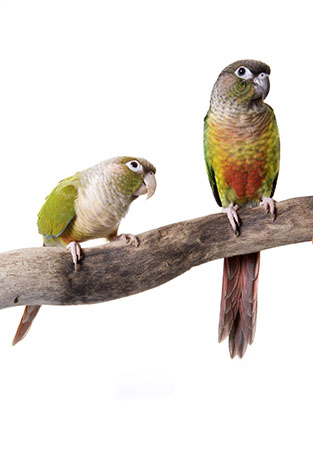
Green-cheeked Conures - pineapple and yellow-sided varieties - in an aviary
Materials For Constructing an Aviary or Flight
A concrete floor for easy cleaning is recommended, rather than bare earth in which salmonella and other nasties can lurk. You can always incorporate gaps in the concrete for live shrubs or trees. Wood and wire (of suitable gauge) are the basic construction materials for the walls, roof and roosting area; although plastic wood-substitutes will be more hygienic, as no fungus will take hold, and red mites will not find the nooks and crannies as appealing for hiding in the daytime.
The wire in the wall sections should be in two layers, about 5cm apart to prevent larger predators such as cats (or children!) sticking their paws in.
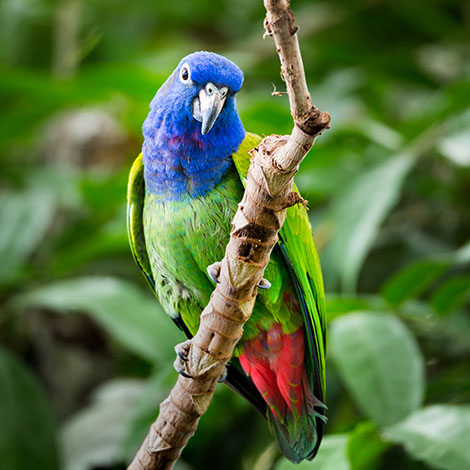
A Blue-Headed Parrot enjoys the fresh air
Between a third and a half of the parrot aviary should be roofed and enclosed on two to three sides, to provide shelter from bad weather, and somewhere ‘indoors’ to roost. A completely unshaded area will give you problems of over-heating, especially where garden walls minimise air circulation. An aviary that faces east or south-east will benefit from morning sun, without baking all day long.
Birdhouse Temperature
A covered space, such as a converted shed birdhouse, will need full-spectrum lighting installed to prevent vitamin D deficiency, and in dry environments a sprinkler system will provide welcome showers. Bird-friendly sun lamps or heaters will offer additional basking and/or warmth in the colder months; and you will need to heat the aviary during the colder months.
Aviary Flooring and Drainage
An aviary will need foundations, like any other building. A concrete floor will need to have good drainage, as will bare ground, if that is what you have chosen as your base. Sandy soils and a slight slope will be ideal; whereas clay soils will be prone to waterlogging. A wet floor will encourage bacterial blooms, and may give your birds foot problems.
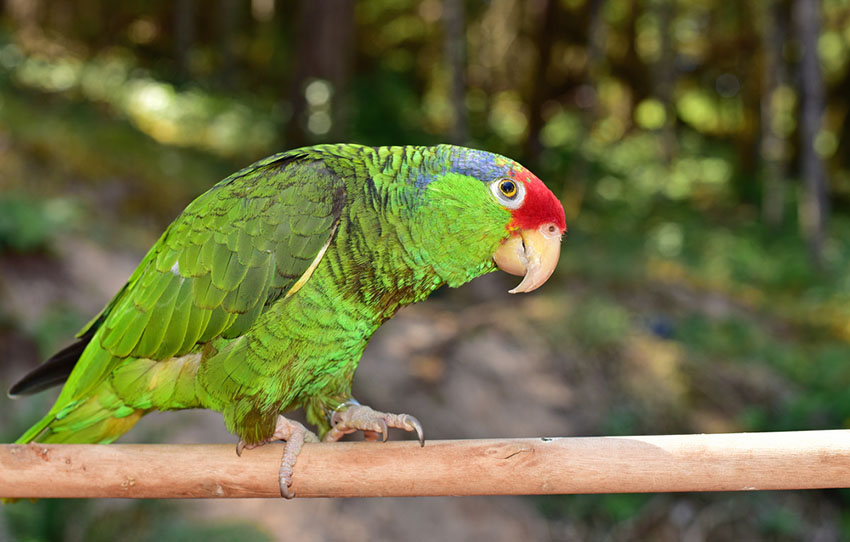
Red-Crowned Amazons, like all parrots, require a clean, well-designed space to live in
An alternative to plain concrete is a series of concrete slabs (or large pebbles) over a layer of gravel and sand. The best concrete-free options are a 10cm layer of sand (the safe type used in children’s sand pits is ideal); or builders sand mixed with a small amount of lime. This prevents bacteria taking a hold (and absorb much of the normal aviary odours too). Any non-concrete flooring (and concrete floors too, if you are building gaps into it) should have chicken wire laid at its base, to prevent rats and mice burrowing their way in. Rodents are attracted to bird enclosures, and at some point you are going to encounter them; but there’s no need to encourage them!
Aviary and Birdhouse Doors and Access
You’ll need to get in and out on a daily basis, so make sure the access is easy. You’ll usually be entering and leaving with your hands full (of food, trays, buckets, etc), so a DIY door that needs lifting from its fitting is not going to work. A two-door system, with at least 60cm between the two is a good set-up, much better at minimising chances of escape than a single door and a plastic-ribbon or chain curtain set up. The outer door can be a sliding one, although the interior door shouldn’t be, in case an unseen bird gets trapped and injured.
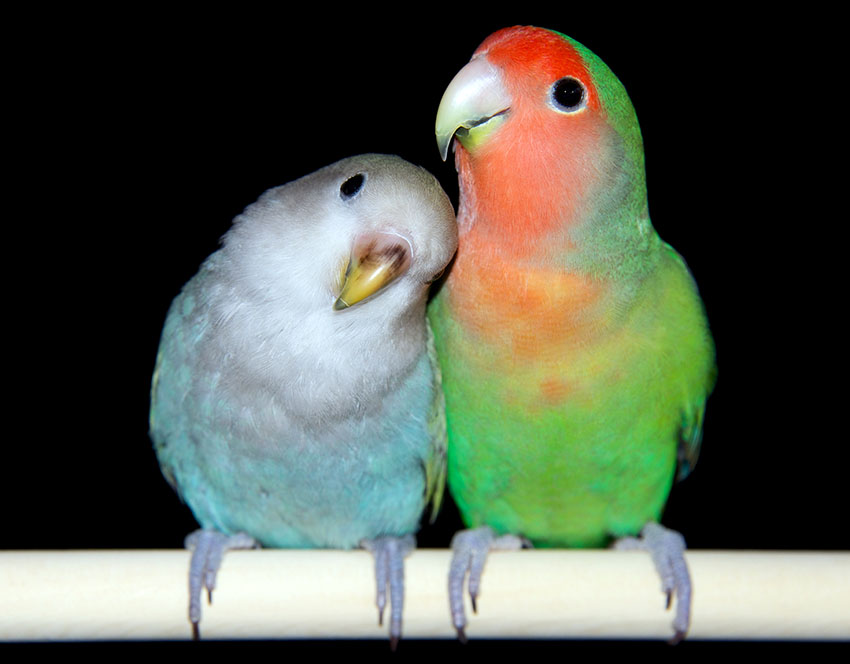
Peach-Faced Lovebirds - standard and blue type
Parrots’ Requirements Outdoors
Different parrots need different things. For example, lories will need hanging baths, large macaws will need sturdy ropes to climb, and different-sized feet will appreciate different girths of perch (and various textures too to keep it interesting underfoot).
- Macaws and cockatoos (and other species too) love to climb using feet and beak, so you should never construct walls with vertical bars. Research your bird, and supply the appropriate gear.
- If you’re keeping a flock of birds, they need to be compatible. Disaster awaits if you don’t do your compatibility homework, as your timid lory will most certainly not cohabit happily with your large, assertive cockatoo.
- You need several discrete feeding, drinking, perching and roosting areas, especially if you are mixing species.
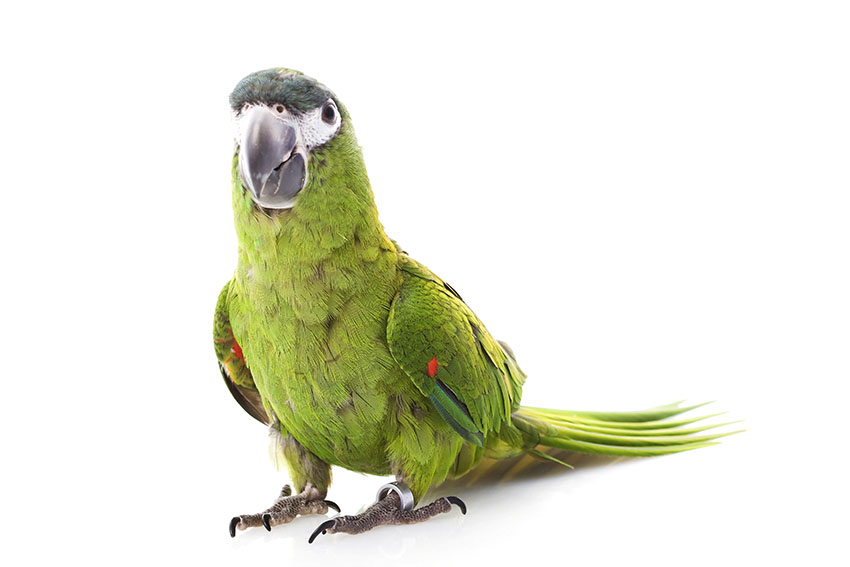
Red-Shouldered Macaws love to climb using beak and feet
Aviary Environment and Accessories
- Provide plenty of toys, swings and other opportunities for exploration and fun
- A water feature will please most parrots
- All aviary plants must be non-toxic
- Any paint used in the construction should be non-toxic, as should wood preservatives, etc.
- Perches should be plentiful, at different heights, and made from different materials
- All food and water trays and dispensers should be securely fixed, and all waste food removed on a daily basis
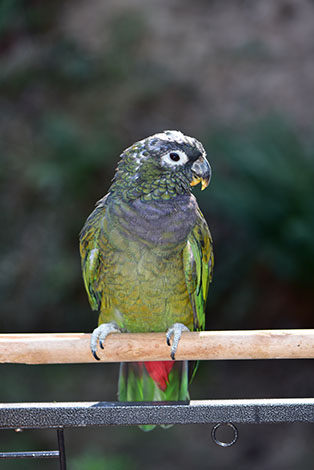
Maximilian's Parrot - outside, happy and healthy
- Rodent poisons and other toxins should never be used in or near the aviary
- All heating should be appropriate to aviaries – camping stoves, freestanding electric fires, etc, should never be used
Aviary birds are less likely to be hand-tame, so you will need to have a bird net – and know how to use it – in the event of an ill, injured, bullied or aggressive bird needing intervention.
Comments
Jeff, 23 November 2024
I loved this! Great site and extremely informative. I am building an atrium outside my bedroom window with his indoor cage against the window so he may fly free in the atrium and return to his cage for sleeping and eating. Does this make sense and will it work? Are there any downsides to this?
Justin, 25 April 2022
Hi, Do you think I could use a plastic shed base loaded with shingle/pebbles for an aviary base? Thanks, Justin
Leon, 27 May 2020
What plants would be non toxic for my two conures that are going to live my avairy I've built...
Catherine, 27 April 2020
I find this site very informational, and handy, thank you for making this, but I do have one question. Is there any way we can get info like this on a specific bird?
Julia, 24 November 2019
This is a wonderful source of information—by far the best I have seen. Thank you!